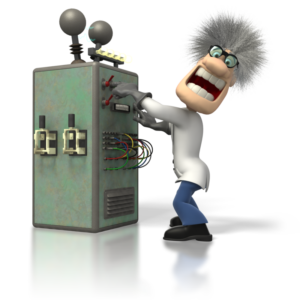
I personally guarantee it. “Not all mathematicians are crazy.” You can take it from me that some of us are almost normal. However, the eccentric ones seem to get most of the press.
I am taking a short break from my higher education series of posts so that I can respond to several serious questions I received concerning the series. In this post, I will address the question of how I do mathematics and what that has to do with my thinking and writings about higher education. In several related future posts, I will deal with six famous mathematicians who have defined how the general public views mathematicians.

Why was I attracted to mathematics? Was it nature or nurture? YES. Speaking like a true mathematician, I’m using the inclusive form of the conjunction “or.” Both nature and nurture led me into the world of mathematics.
I see mathematicians characterized by four traits. I believe that I was born with a rudimentary form or kernel of all four of these traits. However, I didn’t stop there. I worked very hard to cultivate the early buds of those traits in order to enhance and help them blossom into fully-formed fruit.
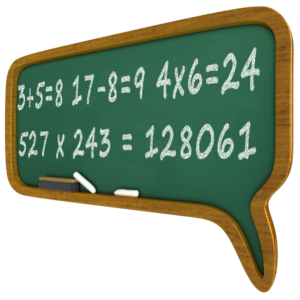
I believe “Quantitative Aptitude” is the first trait a mathematician needs. This trait is a natural comfort with numbers and numerical concepts. My parents always told me that I recognized numerical differences from a very early age. I could count almost as soon as I could speak. Numbers were some of the first words that I used. I was doing simple arithmetical operations like addition and subtraction by the time I was two. I knew my multiplication tables by the time I was three. By the time I entered school, I remember “showing off” by doing three digit multiplication problems in my head without using pencil and paper. I had learned and developed a number of short-cuts and tricks to doing multiplication that I still use today.

The second necessary trait for a mathematician is “Geometric Aptitude.” This is a natural comfort with geometric shapes and differences in sizes. I could always identify the larger piece of cake. To all who know me well, this is clearly the intersection of two of my loves: mathematics and food. From an early age, I could never get enough of either of them.
By the time I was four, I had taught myself simple division and fractions by proportioning out food. I loved the “game” of filling a square or a rectangle with smaller squares and rectangles. To make it more challenging I would include triangles. I remember one of my greatest discovery in high school was the relationship between algebra and geometry. These were two sides of the same coin. They went together like a hand in a glove.
The inverse relationship between multiplication and division came to me automatically. I was doing long division by the time I entered the first grade. The idea of a remainder was never a problem for me. I stretched my abilities by attempting more complicated long division problems “in my head” without using pencil and paper.
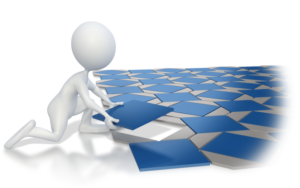
The third trait of a good mathematician is the ability to recognize and identify patterns. These patterns may be recurring numbers, shapes, letters, or objects. The standardized tests where an individual is shown three objects and asked to identify the next object in the sequence were always super easy for me. The patterns would just jump off the page at me. To improve my ability in identifying patterns, I kept looking for more involved sequences on which to work.

Jigsaw puzzles are excellent exercises to improve one’s ability to identify patterns. The patterns may be the shape of the pieces or the image that is on the piece. Deciphering cryptograms is a great exercise for finding patterns. Two more great exercises that I just recently discovered are Sudoku and Word Searches.
The fourth trait of a mathematician is a love of solving problems. Growing up I remember begging my parents to “test” me with math problems, riddles, and mysteries. We didn’t have video games back in the dark ages. Besides baseball and basketball, these were the games I loved and with which I lived. I even transformed baseball and basketball into problem-solving adventures by thinking about how to handle certain situations and then practicing those solutions on the court or diamond.
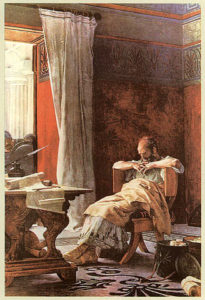
I remember my excitement in fifth-grade when I discovered Archimedes’ method for solving problems.
- Observe and analyze the situation
- Propose or hypothesize solutions
- Test your solutions or hypotheses
- Evaluate solutions and hypotheses to find the best one
- Prove your selected solution or hypothesis is right
Here was the systematic approach to problem-solving that I craved. It combined my natural intuition with logical and quantitative reasoning. I believed it fit me and I adopted it and have used it for the past 60+ years.
Within the Archimedian method are four hidden gems. Good mathematicians must be expert observers. They must have a natural intuition to be able to identify patterns and problems within the situations they encounter. Good mathematicians must be masters in the art and skill of generalization, having the ability to translate real-world problems into problems which are solvable using familiar methods or have the ability to create new methods. They must be extremely proficient in the abstract world of logic in order to “prove” their solutions are the best ones possible. The rudimentary skill and art of observation, intuitive thinking, generalization, and abstraction are innate (nature) but honed by repeated practice (nurture).
I remember four specific events that fixed my path to becoming a mathematician. Three of them occurred in fifth grade. I had a fifth-grade teacher who believed in challenging his students with tough problems to see what solutions they would propose and how they arrived at their destinations. The first defining problem for me related to the area of a triangle. Without telling us how to solve the problem, the teacher asked us to calculate the area of a triangle. I was the first in the class to propose the correct solution. I observed that any triangle could be considered as one half of a rectangle. The area of a rectangle is base times height. Therefore, the area of a triangle must be 1/2 of its base times its height.
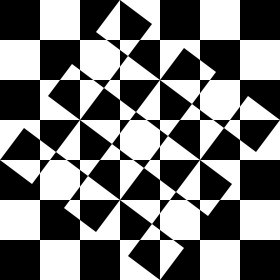
its creator Blackbombchu under the Creative Commons Attribution-Share Alike 3.0 Unported license. Image courtesy of Blackbombchu and Wikimedia Commons.
The second fifth-grade event involved proving the Pythagorean Theorem. Our teacher had introduced the idea of using logic to prove certain theorems or geometric relationships. He showed us how the Egyptians constructed square corners to their buildings and pyramids using the 3-4-5 right triangle and a rope with knots tied at the three, four, and five unit marks. He suggested that in any right triangle the square of the hypotenuse was equal to the sum of the square of the other two sides. ( a2 + b2 = c2 ).
He asked us to prove it. Again, I was the first to come up with a logically, valid proof. I used the alternating square tiles on the floor of our classroom to derive the standard geometric proof of the Pythagorean Theorem. The teacher looked at my proof and said, “Well done. You should become a mathematician.”

Later in the year, this teacher challenged us further with polynomial expansions. Starting with the straight forward multiplication of (x+y) times (x+y), he asked us to try multiplying three terms and then four terms. He asked us to do it up to ten terms.
He asked if we saw any patterns that could be generalized. As I did the repeated multiplications, I wrote the results one over the next. I saw a pattern emerging. The coefficients to combinatoric powers of x and y formed a pyramid in which an entry was the sum of the two entries above it. I had rediscovered Pascal’s Triangle.
Although I needed several hints from the teacher before I could prove the formula logically, the structure of Pascal’s Triangle suggested applications of the numbers in the triangle to not only binomial expansions but also to combinatorics (the number of possible combinations of n things taken r at a time). I went a little further and showed how this would determine the probability of the number of boys and girls in a family of a given size. This time the teacher said, “You are a mathematician.”
The fourth and final event occurred in my final year of undergraduate school. During my first three years in college, I pursued a double major in mathematics and physics. In preparing to register for my last semester, I need one more credit in physics to earn the double major. Unfortunately, the only physics courses the university was offering were courses that I had already taken or the second semester of course sequences for which I had not taken the prerequisite first semester. I asked the department chair for an independent study to complete the physics major. He hesitated for a moment and then said, “Son, I’m sorry but I’m not going to allow this. You need to stick to mathematics. You’re not a physicist. You do physics as if it were mathematics. You don’t have the intuition to be a physicist.” So I took an economics course in place of the physics course and completed undergraduate school with a B.S. in mathematics and double minors in economics and physics (one credit shy of the double major in physics.) I never looked back.
What does mathematics have to do with higher education? Higher education is built on the three foundational blocks of the creation, organization, and distribution of knowledge. The four building blocks of mathematics and the three building blocks of higher education are two sides of the same coin. The purpose of higher education is about identifying patterns and solving problems. I dealt with these two situations in every one of my positions as a faculty member or college administrator. I also found my quantitative and geometric aptitudes extremely helpful. Making things add up and fitting the right block into the correct slot were daily agenda items. Being a mathematician made me a better higher education administrator.